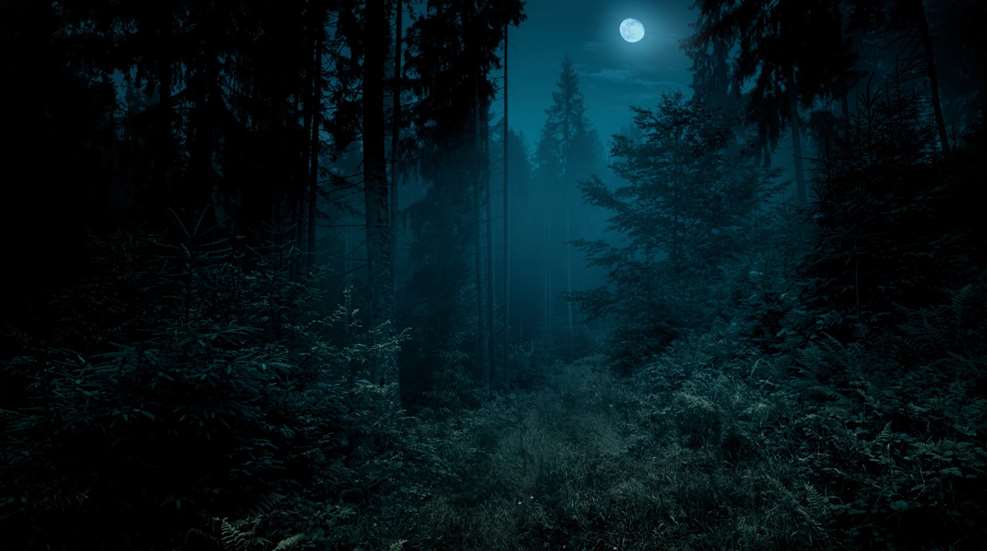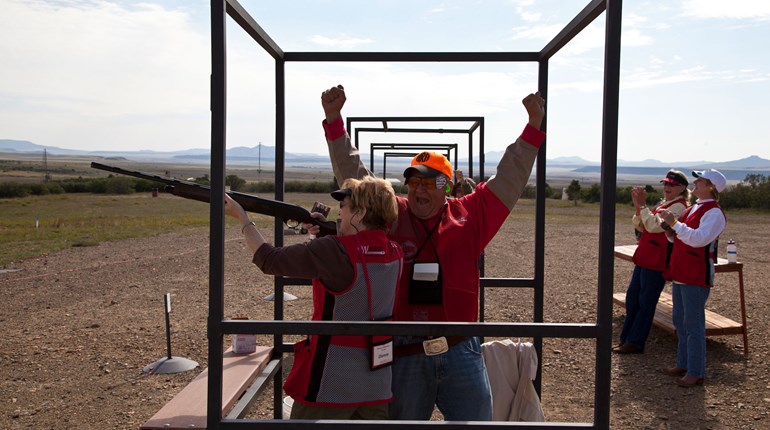
The Green Mountains rise, slope-shouldered and ancient, over the Vermont landscape. At their heart stands a monument to mystery known as Mt. Glastenbury. Although it basks in the same bucolic beauty as the rest of the landscape, it's an eldritch place so eerie and dangerous that the native Mohicans shunned it. It's easy for modern people to dismiss this as ignorance and superstition ... that is, until they try their own luck on the mountain. It's a place shrouded in strangeness where civilization just can't seem to stick, and the center of an American legend: The Bennington Triangle.
If that sounds a little familiar, yes, the "Bennington Triangle" didn't get its name until some time after the "Bermuda Triangle" did. And yes, the area describes a rough triangle with Mt. Glastenbury more or less at its center. And yes, like the Bermuda Triangle, it has a reputation for mysterious disappearances and the sighting of unidentifiable lights in the sky (otherwise known as U.F.O.s). That's where the similarities end. The Bennington Triangle's history is far, far stranger.
Cursed Ground
The Native American tribes of the area always shunned Mt. Glastenbury, claiming that the earth was cursed. Mohican, Abenaki and Pennacook alike all insisted that hunters on the mountain would be bedeviled by "bear-like" creatures that would try to follow them home (and to this day, Bigfoot sightings are common in the area). There's an even creepier legend from that time, though: The claim is that there is a rock on Mt. Glastenbury that looks just like a regular rock until one steps on it. If you're unlucky enough to do that, goes the story, it will disappear and drop you into the deepest recesses of the earth, never to be seen again. The mountain, it was said, would never allow living humans to thrive there and was suitable only for the burial of the dead.
And they were right. Multiple attempts have been made to build a civilization in the heart of the Bennington Triangle, and all of them have failed. During the 18th century, several French trapping and trading villages were built, only to be quietly abandoned. English settlers fared no better; the area sports not one, but two ghost towns known as Fayville and Glastenbury. Those towns were logging towns that went under when the old-growth forest did, and that's not terribly mysterious. What is a little strange, however, is the fact that the vacation resort that was built in that same spot lasted less than a year before shuttering.
Swallowed Whole
Stranger still are the disappearances. Most of the tales are so old as to be unverifiable, but there are modern ones ... and they lend disquieting credence to the Mohican legend about disappearing rocks and bottomless wells.
After the death of Fayville and Glastenbury, the vast majority of the area became public property, owned by the U.S. National Forest Service. By the 1940s, the mountain had healed the scars left by logging a century earlier, and it had become a popular spot for hikers and hunters. One such was Middie Rivers, a 74-year-old hunting guide who had known the area all his life. One day in 1945 he was returning with a group of hunters back to camp, when he suddenly sped up and ran out ahead of them. They assumed he was just trying to beat them back, but when they got there just a few minutes later, Middie was nowhere to be found. Ever again.
About a year later, 18-year-old Paula Welden, a sophomore at local Bennington College, hitchhiked her way to the Long Trail. Multiple other hikers saw her that day, including a couple that was only about 100 yards behind her when her retreating back was finally swallowed up by the darkness. She, too, was never seen again, and her remains were never found, despite a massive manhunt.
October 1950 saw the worst of it. An eight-year-old boy named Paul Jepson disappeared from the cab of the truck where his mother had left him for about an hour (which was standard parenting practice at the time). They never found Paul or any clues that may explain what happened to him.
Just two weeks later, an experienced 53-year-old camper named Frieda Langer was camping with her cousin. She had a misstep and fell into a shallow stream while hiking. She told her cousin she'd go back to camp to put on some dry clothes and rejoin him, but she never did. Over 300 people searched for two weeks, but it was seven months before Frieda's body was found. Once again, there were no clues about what befell her.
A Weird, Haunting Energy
The Bennington Triangle works its fell magic even today. October 2008 saw the brief disappearance of a Bennington music teacher named Robert Singley, who set out for a day hike that went terribly wrong. As darkness fell, he later told the Bennington Banner, he experienced a moment of derealization. "It just suddenly got dark," he recalled, "and then it's like, 'Where am I? What's going on?' I was totally lost." Fog rolled in, and Singley wisely elected to stop trying to navigate. Searching for a place to shelter the night, he came upon a large maple. "I was kind of like drawn to it in the night. It was really expelling a weird sort of – I don’t know – a really weird haunting energy – whatever that means," he said.
The next dawn, he learned he was actually about 7 miles away from where he'd thought he was. He passed that same maple on his way back to the trail, but it looked totally different. What's more, the trail was now littered with landmarks that he couldn't possibly have missed on the way out, like downed logs blocking the trail.
Rational Explanations?
Generally, it shouldn't be considered a mystery when hikers go missing in the wilderness. It's far easier to become disoriented in the woods than most of us can imagine, especially if you're not using navigation aids like a GPS or topo map. There's also a very well-known (if not well-understood) phenomenon in which people who have become lost go into a panic state so extreme it's really a fugue. People in this fugue state have done things like running and hiding from would-be rescuers.
One doesn't even need to be in a panic to make critical mistakes in the woods. Remember Frieda Langer? Right before she disappeared, she took an evening dunk in an October stream. Hypothermia is a strong possibility; it can hit remarkably quickly if you've been soaked. What's more, hypothermia can also cause people to behave in odd ways that reduce their chances of rescue (like hiding from rescuers, or removing all of their clothing in an action called "paradoxical undressing"). The fact is that our human veneer of civilization is paper-thin, and it doesn't take much to get us to start acting like panicky animals.
It's also a fact that human psychology causes us to find patterns where there are none. It's called pareidolia, and it's the same mental process that lets you see castles and kittens in the clouds. So, you could certainly have a string of disappearances that aren't unusual statistically, but that seem to form a pattern. That may be exactly how the "Bennington Triangle" became a phenomenon.
Or maybe not. If you're interested in finding out for yourself, it's a two-day hike from Vermont's Route 9. Bring a GPS ... holy water in the Camelbak is purely optional.















































